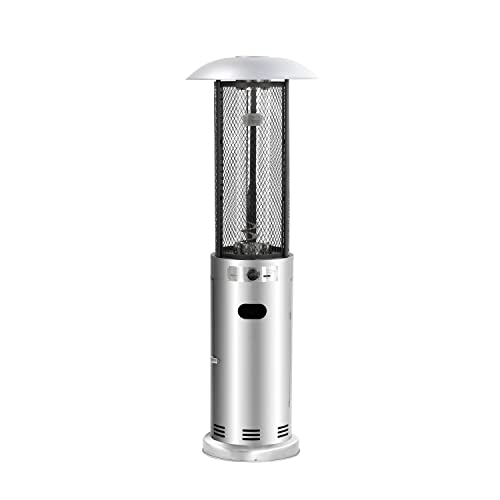Buying Gas Radiant Heaters: A Comprehensive Guide
Gas radiant heaters have actually gained popularity recently for their efficiency and capability to supply instant heat. As more property owners and services try to find ways to keep their areas comfy, understanding the functions, benefits, and considerations when purchasing these heating systems can be extremely informative. This post explores the complexities of gas radiant heaters, assisting possible buyers in making informed decisions.
What are Gas Radiant Heaters?
Gas radiant heaters are devices that make use of propane or gas to emit heat directly into a room. Rather than heating the air, they warm objects and individuals in their area, supplying comfort faster and efficiently. These heaters are popular for both indoor and outdoor settings due to their adaptability and effectiveness.
Key Features of Gas Radiant Heaters
- Direct Heating: Unlike conventional heaters that warm the air, gas radiant heaters offer direct warmth, making them an efficient option for rapidly warming up areas.
- Portability: Many models are readily available as portable units, allowing them to be quickly moved from one place to another.
- Fuel Variety: Gas radiant heaters can be powered by natural gas or propane, giving users flexibility based upon accessibility and preference.
- Adjustable Settings: Most gas radiant heaters included adjustable heat settings, allowing users to tailor the level of warmth based upon their requirements.
Benefits of Gas Radiant Heaters
- Energy Efficiency: These heaters convert gas into heat effectively, resulting in lower utility costs compared to electric heaters.
- Quick Heating: Radiant heat is felt almost instantly, making these heaters ideal for unexpected temperature drops.
- Low Maintenance: Gas radiant heaters generally require less maintenance than electrical designs, making them a problem-free choice.
- Environmentally Friendly: When powered by tidy gas, these heaters can be a more ecologically sustainable option compared to other heating methods.
Types of Gas Radiant Heaters
When it concerns choosing a gas radiant heater, it's necessary to comprehend the various types readily available. Below are the most typical options:
- Indoor Gas Radiant Heaters: Designed for indoor spaces, these heaters are typically vented or unvented and often featured built-in security functions.
- Outdoor Gas Radiant Heaters: Commonly utilized in outdoor patios or outdoor dining locations, these heaters are developed to endure the components.
- Wall-Mounted Gas Radiant Heaters: A space-saving alternative, these units are perfect for smaller spaces and can be outfitted with various heat outputs depending on the area's requirements.
- Freestanding Gas Radiant Heaters: These portable models can be used in various areas, perfect for those who need flexibility.
Buying Guide: How to Choose the Right Gas Radiant Heater
When buying a gas radiant heater, a number of elements need to be considered to guarantee you pick the best design for your space:
1. Heating Capacity
- Measured in BTUs (British Thermal Units), the heater's capacity identifies just how much area it can effectively warm. Outdoor Living should examine their particular requirements based on room size.
| Room Size (sq feet) | Recommended BTUs (for Gas Radiant Heaters) |
|---|---|
| 100 - 200 | 5,000 - 10,000 BTUs |
| 200 - 400 | 10,000 - 20,000 BTUs |
| 400 - 600 | 20,000 - 30,000 BTUs |
| 600 - 800 | 30,000+ BTUs |
2. Kind of Gas
- Consider whether you will be using propane or natural gas, as different heaters accommodate different fuel types.
3. Security Features
- Try to find models geared up with security features such as automated shut-off valves, tip-over defense, and oxygen exhaustion sensors.
4. Installation Requirements
- Some heaters may need expert installation, specifically vented designs. Make sure to consider the costs and requirements associated with setup.
5. Mobility
- If flexibility is essential, think about portable models that can be easily moved from one place to another.
Installation and Maintenance
Gas radiant heaters are typically simple to install, particularly portable models. However, vented options might necessitate expert setup to ensure they satisfy regional safety codes.
Upkeep generally includes:
- Regular cleansing to avoid dust accumulation.
- Examining gas connections and fittings for leaks.
- Making sure security features are functional.
Tip: Regular checks around the unit can help extend its life expectancy and maintain safety.
Often Asked Questions (FAQs)
Q1: Are gas radiant heaters safe for indoor use?A1: Yes
, as long as they are properly vented and equipped with required safety functions, they can be safely utilized inside your home.
Q2: Can gas radiant heaters be used in enclosed spaces?A2: Unvented gas heaters can posture threats in enclosed spaces due to prospective suffocation or carbon monoxide gas accumulation. Constantly ensure enough ventilation. Q3: How do I understand what size heater I need?A3: The proper size depends upon the area you mean to heat. Refer to the BTU chart
above to determine your requirements. Q4: What is the distinction between propane and natural gas heaters?A4: The main difference lies in their energy source
; propane is provided by means of tanks, while natural gas is generally piped into homes. Q5: How can I make the most of efficiency?A5: Ensure the heater is properly sized for your space, maintain it regularly, and think about utilizing it in mix
with other heating approaches for optimum convenience. Gas radiant heaters can be a terrific addition to any home or business, offering energy-efficient and fast heating solutions. By comprehending the different types, features, and factors to consider
when buying, buyers can make educated decisions that meet their heating requires. With Modern Patio Heaters , these heaters offer convenience, dependability, and a welcoming environment during cooler seasons.

